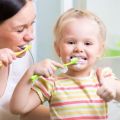How to Get Rid of Cavities

What causes cavities?
Dental cavities, or caries, are tiny gaps in the teeth's hard surface. They are caused by bacteria that generate acid from sugar on the teeth's surface. A bacterium known as Streptococcus mutans is the most common culprit.
The bacteria form a sticky film known as plaque. Plaque acids strip minerals from (demineralize) the enamel— a mostly calcium and phosphate layer of the teeth. This oxidation causes the enamel to have tiny holes. A cavity emerges once the acid damage extends to the dentin layer below the enamel.
Getting rid of cavities at home
Most home treatments were based on a 1930s Trusted Source report that indicated cavities were caused by the diet's lack of vitamin D. In this research, there was a reduction in cavities among children who added vitamin D to their diets. Nevertheless, there were the best results for those who added vitamin D while also excluding grain products from their diets. This may be because the grains are able to stick to the lips.
Not getting enough vitamin D may make teeth more susceptible to cavities, but we now understand that this is only a part of the puzzle. Other risk factors for cavities include:
dry mouth or having a medical condition that reduces the amount of saliva in the mouth
eating foods that cling to teeth, like candy and sticky foods
frequent snacking on sugary foods or drinks, like soda, cereals, and ice cream
heartburn (due to acid)
inadequate cleaning of teeth
bedtime infant feeding
Once a cavity has penetrated the dentin, you won’t be able to get rid of it at home. The following home remedies might help prevent cavities or treat “pre-cavities” by remineralizing weakened areas of your enamel before a cavity develops:
1. Sugar-free gum
Chewing sugar-free gum after meals was shown to help remineralize enamel in clinical trials. Xylitol-containing gum has been thoroughly investigated for its ability to promote saliva production, increase plaque pH, and decrease S. Mutans, but it takes long-term studies.
A casein phosphopeptide-amorphous calcium phosphate (CPP-ACP) compound has been shown to decrease S. Mutans even more than chewing gum that contains xylitol. This type of gum can be sold in supermarkets.
2. Vitamin D
Vitamin D is important in helping the food you eat to absorb calcium and phosphate. StudiesTrusted Source suggest an inverse relationship between eating foods high in vitamin D and calcium, such as yogurt, and young children's cavities. Vitamin D from dairy products such as milk and yogurt can be extracted. Vitamin D can also be derived from the sun.
3. Brush with fluoride toothpaste
Fluoride plays a major role in cavity prevention and enamel remineralization. Extensive research Trusted Source has been done to show that cavities are avoided by regularly brushing your teeth with fluoride toothpaste.
4. Cut out sugary foods
This is the cavity cure no one enjoys talking to — stop eating so much sugar. The Trusted Source of the World Health Organization states that the most important risk factor for cavities is eating sugar. We suggest increasing the daily intake of sugar to less than 10% of your overall caloric intake.
When you're eating sugar, try not to snack all day long on sugary foods. The enamel has an opportunity to remineralize once the sugar is gone. But if you eat sugar regularly, you don't have the chance to remineralize the teeth.
5. Oil pulling
Oil pulling is an ancient practice involving swimming in your mouth for about 20 minutes around an oil like sesame or coconut, then spitting it out. Proof does not support claims that oil pulling "removes contaminants" from the skin.
Oil pulling is an ancient practice involving swimming around an oil, such as sesame or coconut, in your mouth for about 20 minutes, then spitting it out. Claims that oil pulling "removes contaminants" from the body. But a small, triple-blind, placebo-controlled clinical trial showed that oil pulling with sesame oil reduces plaque, gingivitis, and the number of bacteria in the mouth just as effectively as chlorhexidine mouthwash.
6. Licorice root
Extracts from the Chinese licorice plant (Glycyrrhiza uralensis) can combat the bacteria responsible for dental cavities. Using licorice extract in a lollipop showed they were effective in significantly reducing S. mutans in the mouth and preventing cavities.
The bottom line
Vitamin D, oil pulling, licorice lollipops, chewing gum, and other home remedies won’t get rid of existing cavities on their own. But these methods may keep cavities from getting bigger and prevent new ones from coming. At best, they can help remineralize softened or weakened areas of your enamels before a cavity can develop.
The earlier a cavity is detected, the easier it will be for your dentist to repair it, so be sure to visit your dentist regularly.
Articles and publications of other companies:
- +1 (510) 790-0700
- 37259 Fremont Boulevard, Fremont, CA 94536
- drmeenugiri.com



